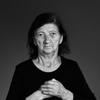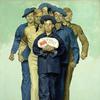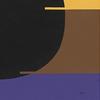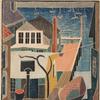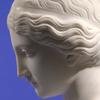Nathan Oliveira, artist, remembered
- NEW YORK, New York
- /
- November 18, 2010
One of the leading American artists of the twentieth century, Nathan Oliveira maintained an abiding concern with the abstracted human figure for over fifty years, in a body of work unconstrained by the dictates of representational art. In his paintings, watercolors, monotypes, and sculptures he consistently approached abstraction by creating variations of the figure in ambiguous, often mysterious space. Through its universality and hint of the eternal, his work explores aspects of human presence and consciousness across a range of different media.
Oliveira died at his home in Stanford, California, on Saturday, November 13. The cause was related to pulmonary fibrosis, according to DC Moore Gallery, which represents the artist.
Born in Oakland in December 1929 to Portuguese immigrant parents, Oliveira graduated from California College of Arts and Crafts in Oakland with a BFA and MFA, and then spent several years teaching and focusing mainly on printmaking. In 1950, he studied with Max Beckmann at Mills College in Oakland, which was a defining experience for his artistic development. For a few years in the mid-1950s, he joined several San Francisco artists including Richard Diebenkorn, David Park, Elmer Bischoff, and others who met regularly to draw from the model. He moved away from the group as his interest in the solitary figure developed, though, and never considered himself to be one of the Bay Area figurative painters.
By 1957, Oliveira had begun a group of paintings of the solitary human figure in abstracted space. Two years later he achieved national recognition when four of his works were included in a groundbreaking exhibition, New Images of Man, at the Museum of Modern Art in New York. Soon after, the museum acquired one of his paintings, further establishing his reputation. He had already had the first of several successful exhibitions at The Alan Gallery in Manhattan in 1958, and was about to begin showing at the Paul Kantor Gallery in Los Angeles. Before long, his work was being included in exhibitions throughout the United States and Europe.
In the early 1960s, Oliveira turned once again to printmaking as his primary focus. He accepted a tenured teaching position at Stanford University in 1964, which he held until his retirement in 1995. Moving into a large studio in Palo Alto, and inspired by an old stage in the building, he returned to painting in 1966—first with his Stage series of largely empty interiors, and then with single figures, often masked and costumed in theatrical themes.
From then on, Oliveira pursued a rich and varied career, often working in several different modes simultaneously. In the 1970s, he immersed human figures in large monochromatic fields of similar hues, making them barely distinguishable from the shimmering radiance that surrounded them. He also celebrated the mysterious and boundless nature of landscape with his Site monotypes, followed by a series of paintings that was prompted by a visit to Switzerland in 1978. In 1982, he began to work in clay and wax, resulting in a group of figurative sculpture and landscape tableaux in bronze. Other major bodies of work were inspired by his life-long interest in birds, beginning with the Kestrel and Wing series, and culminating during the late 1980s and early 1990s with the Windhover series, a group of large-scale paintings of sweeping arcs that extend up to seventeen feet wide.
In the early 1990s, Oliveira began to paint geometrically abstracted figures that he called his Stelae series, which occupied him for nearly a decade. His most recent paintings are large canvases of solitary human figures depicted in a palette that is dominated for the most part by reds, golds, and oranges—colors that resonate with an intensity and a deep spiritual affinity that Oliveira sought to convey in his work.
Over the years, Oliveira had a number of major exhibitions of his work, including Nathan Oliveira Print Retrospective, 1949-80, California State University, Long Beach (1980); Nathan Oliveira: A Survey Exhibition 1957-1983, San Francisco Museum of Modern Art (1984); Variations in Time/Nathan Oliveira/ Monotypes and Monoprints, Fine Arts Museum of San Francisco (1997); The Art of Nathan Oliveira, San Jose Museum of Art (2002); and Nathan Oliveira: The Painter’s Bronzes, Palo Alto Art Center (2008). He also had many exhibitions at the John Berggruen Gallery, San Francisco, as well as solo exhibitions at DC Moore Gallery, New York.
Nathan Oliveira is survived by a sister, Marcia Heath of Milbrae, CA; and three children, Lisa Lamour of Fresno, CA; Gina Oliveira of Kihei, HW; and Joe Oliveira of Palo Alto, CA.



